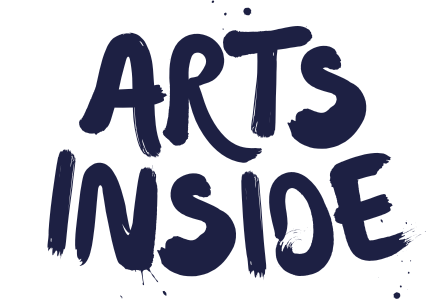Q&A with Blake Blevins
This month, our Q&A features Blake Blevins, a former AmeriCorps VISTA volunteer at the Grundy County Jail. He is currently pursuing a JD degree at Georgetown University.
1. What is your relationship to/experience with Arts Inside?
I first became familiar with Arts Inside when I served at the Grundy County Sheriff’s Office as an AmeriCorps VISTA. I primarily worked with the Reentry Program in the Grundy County Jail, and Arts Inside had been very involved with that program. I met Hilda Vaughan, who is Arts Inside’s founder and Director while in this role, and the two of us worked on a few grant proposals together. Once my year of service through AmeriCorps ended, Hilda asked me to serve on Arts Inside’s Board of Directors. I joined the board and eventually took on the role of Secretary/Treasurer. I am very grateful for the opportunity to stay involved in the South Cumberland Plateau region and have enjoyed my role in helping Arts Inside continue to grow and better assist the incarcerated population it serves.
2. What artistic hobbies/pastimes do you enjoy?
I’m actually not a very artistic person, although I wish I was. In my free time, I enjoy reading anything from biographies/memoirs to fiction. I did buy a guitar and hope to learn to play it at some point, but progress has been slow.
3. Do you regularly create or make anything? If so, do you share it with others?
I definitely consider myself more of an art consumer than supplier. Every now and then I’ve participated in different art projects through programs I’ve worked with, and although I don’t think I’ve ever made anything particularly good, I never mind sharing it with others.
4. When do you feel most creative?
I feel most creative after I’ve read an interesting book that discusses new ideas or concepts. I also feel creative when I’m able to approach a complex problem and find unique, out-of-the-box solutions.
5. Do you consider yourself a creative person?
I don’t consider myself artistic, but I think I can be creative in some circumstances. I believe there are many different ways someone can be creative, whether it’s in their artistic endeavors, workplace, or other aspects of their lives.
6. Who is the most creative person you know? How have they influenced you?
The most creative person I know is probably my little brother, Sebastian. Since he was a toddler, he’s been really into Legos, and the stuff he builds is always incredible. He’s built replicas of pretty much every major landmark, including the Buckingham Palace, the Eiffel Tower, and even the International Space Station. The stuff he builds in Minecraft is just as impressive, and every time I visit, he takes me on a tour of his newest Minecraft house, ship, or whatever else he’s created. I’m blown away with the creativity and patience it takes for him to build the things he does, and he inspires me to be more of both of those things.
7. Did you create things during your childhood?
I used to like to draw characters from the cartoons I watched. I wasn’t very talented, but my parents were really good at pretending like I was.
8. How do you see the role of art in your life now?
Even though I’m definitely not an artist, I think art is incredibly important as a way to connect and inspire people. Since I’ve moved to Washington, DC, I’ve tried to make more time to appreciate art by visiting the many monuments and museums in the area. Eventually, I hope to make more time to try to become more artistic.
9. How have you seen art/creating make a difference in the lives of others?
I think the most impactful way I’ve personally seen art make a difference in the lives of others is through the work that Arts Inside does. The projects they do in local jails allow incarcerated people to find an outlet so that they can explore their feelings and find creative ways to cope with their difficult situation. When Arts Inside works with their incarcerated clients, it allows them to better manage their emotions, articulate their thoughts, and connect with people around them. This can give them a better outlook, more effective coping strategies, and make them feel more comfortable reaching out for help with other aspects of their incarceration when they need it.
“When Arts Inside works with their incarcerated clients, it allows them to better manage their emotions, articulate their thoughts, and connect with people around them. This can give them a better outlook, more effective coping strategies, and make them feel more comfortable reaching out for help with other aspects of their incarceration when they need it.”

